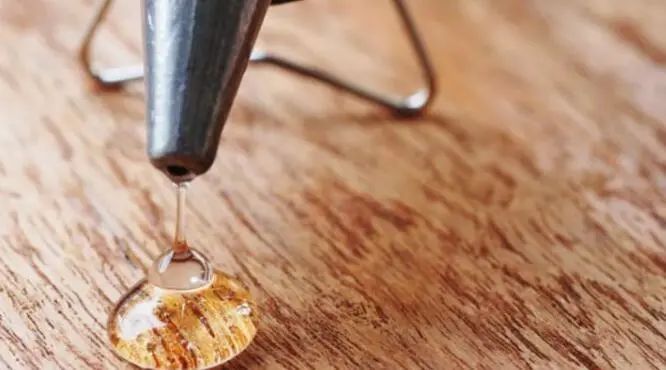Preface
Two-component polyurethane adhesives are usually composed of an isocyanate component (curing agent) containing NCO and a hydroxyl component (main agent) containing hydroxyl. The two liquid components are mixed in a certain ratio to produce a solid polyurethane by reacting with NCO and OH, and then the polar groups of the polyurethane are used to form hydrogen bonds with the surface of the substrate, and other bonding mechanisms are used to bond.

Bayer first developed Desmoders series diisocyanate and Desmophens series low molecular weight end-hydroxy polyester polyol, which can be configured in a certain ratio to obtain Polystal series two-component solvent-based polyurethane adhesives, which laid the foundation for the future industrial development of two-component polyurethane adhesives. This has laid the foundation for the industrial development of two-component polyurethane adhesives.
Two-component polyurethane adhesives are reactive adhesives in which the two components are mixed in a cross-linking reaction and cured for bonding. Usually curing can occur at room temperature, but also can be heated for curing, and its final adhesive strength is generally greater than that of one-component polyurethane adhesives, which can meet the requirements of structural adhesives. In addition, the amount of two-component polyurethane can be adjusted within a certain range, the formula is flexible, and by adjusting the raw materials and molecular weight of the two components, it can be used for bonding plastics, films, metals, wood, glass and other materials, and the bonding range is wide.
According to the presence or absence of solvent, two-component polyurethane adhesives can be divided into solvent-based and solvent-free types.

Although solvent-based two-component adhesives have good wettability, high bond strength and strong permeability to substrates, they are not conducive to environmental protection and health.
Solvent-free two-component adhesives do not contain solvents, will not cause pollution due to solvent volatilization, safe operation. It has a relatively good development prospect. The main agent and curing agent of solvent-free two-component polyurethane have high viscosity at room temperature, but still have fluidity. When used, the two are mixed proportionally and warmed up to 50-60℃ to reduce the viscosity, and because it does not contain solvent itself, it can be directly coated on the substrate without the process of drying by heating.
Composition
The two-component polyurethane adhesive is mainly composed of two components, and it is customary to call the polyisocyanate component A or A component and the hydroxyl component B or B component. The A component (polyisocyanate component) is mainly composed of polyisocyanate, small molecule chain-expanding cross-linker, auxiliary agent and filler, while the B component (hydroxyl component) is mainly composed of polyol or end-hydroxy polymer generated by the reaction between polyol and isocyanate, small molecule chain-expanding cross-linker, catalyst, auxiliary agent and filler. filler.
Raw material
Function
Commonly used
Polyisocyanate
Involved in curing reactions
PAPI, MDI, TDI, HDI diurea, TDI-TMP adducts, HDI trimers and prepolymer polyisocyanates
Polyol
Participation in the curing reaction
Polyether polyol, polyester polyol, castor oil and its derivatives, etc.
Small molecule chain extenders
React with terminal NCO groups to form carbamates or urea groups for chain expansion
Ethylene glycol, diethylene glycol, 1,4-butanediol, hexanediol, etc.
Cross-linking agents
Produce cross-linking to form three-dimensional network structure
Trimethylolpropane, glycerol, triethanolamine, etc.
Catalyst
Speed up the reaction rate
Triethylene diamine, dibutyltin laurate, stannous octanoate, bismuth isooctanoate, zinc isooctanoate, etc.
Additives
Increase additional performance
Plasticizers, light stabilizers, antioxidants, colorants, flame retardants, water removers, etc.
Fillers
Reduce cost, improve hardness or other properties
Talc, titanium dioxide, silica, molecular sieve powder, etc.
Applications
Two-component polyurethane adhesives have the advantages of good mechanical properties, adhesion, chemical resistance, adjustable performance, high bonding strength, wide bonding range, etc., and are widely used in the bonding of metals, plastics, packaging materials, insulation materials and other substrates. It can be classified into general-purpose two-component polyurethane adhesives, two-component adhesives for laminated films, two-component adhesives for shoes, two-component polyurethane sealants, two-component polyurethane structural adhesives, etc.
General-purpose two-component polyurethane adhesives
The solvent-based two-component polyurethane adhesives developed and applied in the early stage are usually called “two-component polyurethane adhesives”. The main feature of these adhesives is that the organic solution of polyethylene glycol adipate diol and toluene diisocyanate is the main raw material of the end-hydroxy polyurethane as the main agent, and the organic solution of trimethylolpropane – toluene diisocyanate adduct is the curing agent. This kind of adhesive film is strong, impact resistant, water resistant, oil resistant, and good low temperature resistance. It is widely used in the bonding of metal and non-metal materials, and can also be used for the compounding of general packaging materials and decorative materials.
Two-component polyurethane adhesive for laminated films
The main component of two-component polyurethane adhesives for laminated films is generally adipic acid-based polyester polyurethane polyol, copolyester-type polyurethane polyol (isocyanate-modified copolyester-type polyol) or aromatic polyester polyol. Curing agent is generally TMP-TDI adducts. The solvent of these adhesives is generally ethyl acetate and the solid content is low. Mainly used for packaging dry food. Adhesive formulations for high-performance laminated films may contain the main agent to enhance the bonding force. When using the two components are mixed in a certain proportion, and then diluted with solvent to a certain concentration, for coating.
Two-component polyurethane adhesives for shoes
Polyurethane adhesives for shoes are mainly solvent-based two-component polyurethane adhesives. The main agent of such adhesives is a solution of thermoplastic polyurethane, characterized by high viscosity, low solid content, crystallization and curing soon after solvent evaporation, high initial adhesion, and suitable for cold adhesion process of shoe materials. The preparation of two-component polyurethane adhesives for shoes focuses on the synthesis of the main agent, which is mainly composed of crystalline polyester diol and bonded TPU made of MDI. the curing agent component is usually a polyisocyanate cross-linking agent. The common solvents used in the main agent component are usually ethyl acetate, toluene, methyl ethyl ketone, etc., and mixed solvents are usually used.
Two-component polyurethane sealant
The main agent of two-component polyurethane is usually the end NCO prepolymer obtained by the reaction of polyether polyol and polyisocyanate; the curing agent is composed of polyether polyol, polyamine and other active hydrogen compounds, filler, thixotropic agent, antioxidant, catalyst, etc. There are also a small number of two-component polyurethane sealants with hydroxyl component (or polyether filler mixture or terminal hydroxyl prepolymer) as the main agent and polyisocyanate as the curing agent. With the advantages of fast curing rate, good chemical resistance and low cost, it has a wide market in the field of construction and road engineering.

